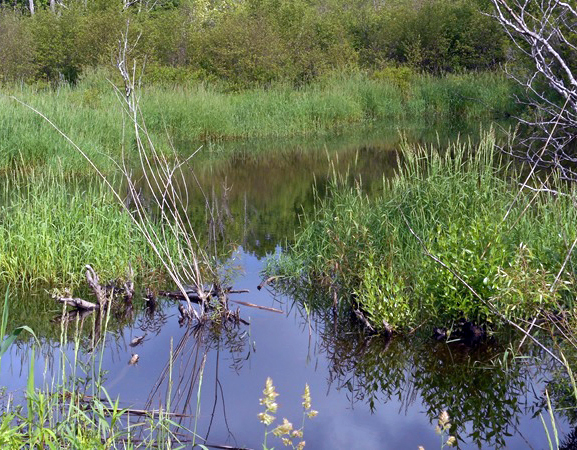 This phase is critical to the success of any restoration project because this is when project goals are identified and the means to achieving targeted outcomes will be determined. Baseline studies need to be taken, stakeholder groups need to be identified, and facilitated discussions need to take place which provide decision-makers and stakeholders with information, maps, designs and projections in order to analyze comprehensive trade-off scenarios and make well-informed choices. Having a well thought out and scientifically based restoration design that accounts for the surrounding landscape and watershed priorities is integral to producing anticipated outcomes. And having the wetland restoration designer follow through the project from beginning through to completion is highly recommended.
This phase is critical to the success of any restoration project because this is when project goals are identified and the means to achieving targeted outcomes will be determined. Baseline studies need to be taken, stakeholder groups need to be identified, and facilitated discussions need to take place which provide decision-makers and stakeholders with information, maps, designs and projections in order to analyze comprehensive trade-off scenarios and make well-informed choices. Having a well thought out and scientifically based restoration design that accounts for the surrounding landscape and watershed priorities is integral to producing anticipated outcomes. And having the wetland restoration designer follow through the project from beginning through to completion is highly recommended.
Restoration objectives and the evaluation of “success” go hand and hand. It is critical that objectives be based on a common understanding of the site’s capabilities, how much effort is expected for maintenance of functions, and how the site affects adjacent landscapes in the watershed. The wetland science community has a long history of using terms like restoration, creation, enhancement, etc. And discussions of the distinctions between the three provide some interesting discussions. However, a conscious decision can and should be made at the first stage of planning as to which of the three categories is being proposed. Furthermore, we should avoid, as much as possible, the common conflicts between “historic conditions”, and “which time frame to restore to” when we use the term restoration.
A high quality set of plans and specifications, with accurate quantities, provides a basis for determining a contractor’s diligence, and will result in lower construction costs because of a reduced need for the contractor to allow for contingencies. It also provides a good baseline for determining increased or decreased cost due to needed changes which are identified during implementation. While contractors vary in their experience in wetland projects, high quality plans and specifications provide the information needed for even inexperienced contractors to accurately estimate costs for bids, and to implement the project as intended. Finally, quality assurance must be adequate to routinely assess a contractor’s performance, and let the contractor know if he or she is following the plans and specifications. This is critical because wetland implementation projects frequently have unexpected site conditions. The uncovering of un-known drainage tile, unexpected subsurface soil conditions, cultural resources, and many other items require a quick resolution, which should be conducted as a change in the plans and specifications. Restorationists who do not follow the approved design or who fail to adapt the design when unexpected site conditions are identified risk missing the goals.
For specific recommendations on planning and designing your wetland restoration, refer to the NAWM white paper, Wetland Restoration: Contemporary Issues & Lessons Learned (2017).
Restoration Costs
Restoration costs are frequently underestimated, particularly those costs associated with evaluating baseline conditions, post implementation monitoring and long-term management. There is often pressure to further reduce anticipated costs to save money either because funding resources may be limited (in the case of a voluntary restoration project) or in order to increase profits (in the case of mitigation). Regulated entities commonly seek to reduce both the time frame and parameters for monitoring. When funding is inadequate, resources are not available to address project failures. There is very little information available to compare restoration costs from site to site or by wetland type so that reasonable cost estimates may be developed. Accurate cost estimates are important for budgeting to cover all anticipated project costs, including monitoring and reporting.
Ecosystem Service Valuation
Further, the overall economic benefits of wetland restoration are often either undervalued or not even considered even though they are frequently greater than the cost of the restoration itself. This is primarily because many wetland benefits are difficult to derive a monetary value for and are non-exclusive so there may often be no direct economic benefit to the agency or organization that is paying for the restoration. Rather, the benefits are spread more broadly and are considered a “public good” (e.g., habitat conservation, flood water attenuation, intrinsic value, etc.). More information on ecosystem service valuation.
NAWM Restoration Publications
Other Useful Publications & Resources
